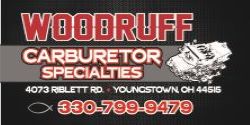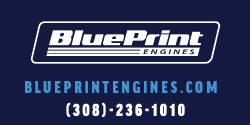Yesterday I went with
@Kern Dog to the machinist to drop off the cam bearings, intermediate shaft bushing, and the pistons for him to do the final hone. Greg dropped off his cam bearings and bushing and Rick will be finishing up his engine shortly. Mine's next, so I gotta get my butt in gear and finish ordering some parts.
Camshaft selection is always my most hand-wringing decision, but at the same time I enjoy the research more than any other engine component. I finally made a decision.
You Tube has dozens of 360 build videos. I subscribe to JustMoparJoe, and he did a 360 build series a few years ago. Power Nation is another site I subscribe to. They work on all makes, but they had a couple of good videos on stroking a 360 with TF heads. Their build used an off the shelf Comp grind of 236/242, 581/578 lift @1.6 on a 110° LSA. With a TF SP intake, the motor made 550 ft-lb @4,100 and 537 hp @6,000. Torque was over 450 ft-lb @2,500. I understand those are dyno numbers under perfect conditions, but it's still impressive low-rpm torque with a single plane intake. I'm running an AirGap RPM.
Here's the video:
Just the other day, FABO member James Clews added this (post #47):
A few weeks ago I submitted a cam questionnaire to Hughes Engines, and Dave responded with a recommendation of their SER4650ALN-9 grind, a 246/250 @0.050; .592/.603 @ 1.6; 109° LSA. I felt it was a little too aggressive for my taste so today I decided on the Hughes Engine SER3842ALN-10 grind. Duration is 238/242 @.050"; .576/.587 lift @ 1.6; 110° LSA. Ironically, this a larger cam than I have in the 440.
It feels good to clear that milestone. Still need to buy rocker arms and talk to Mike at B3 Racing.

















